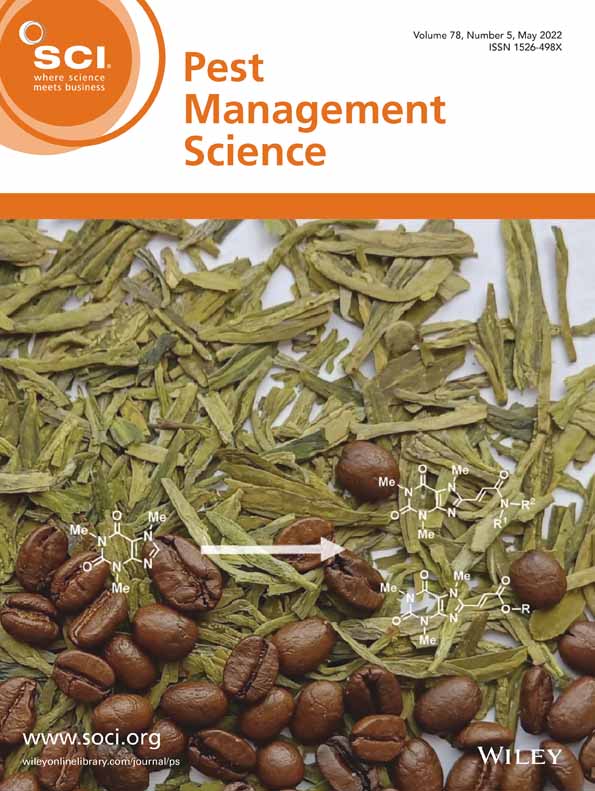Ver ítem
- xmlui.general.dspace_homeCentros Regionales y EEAsCentro Regional Buenos Aires SurEEA BarrowArtículos científicosxmlui.ArtifactBrowser.ItemViewer.trail
- Inicio
- Centros Regionales y EEAs
- Centro Regional Buenos Aires Sur
- EEA Barrow
- Artículos científicos
- Ver ítem
A novel EPSPS Pro-106-His mutation confers the first case of glyphosate resistance in Digitaria sanguinalis
Resumen
BACKGROUND: Digitaria sanguinalis has been identified as a species at high risk of evolving herbicide resistance, but thus far, there are no records of resistance to glyphosate. This species is one of the most common weeds of summer crops in extensive cropping areas in Argentina. This weed shows an extended period of seedling emergence with several overlapping cohorts during spring and summer, and it is commonly controlled with glyphosate. However, a D.
[ver mas...]
BACKGROUND: Digitaria sanguinalis has been identified as a species at high risk of evolving herbicide resistance, but thus far, there are no records of resistance to glyphosate. This species is one of the most common weeds of summer crops in extensive cropping areas in Argentina. This weed shows an extended period of seedling emergence with several overlapping cohorts during spring and summer, and it is commonly controlled with glyphosate. However, a D. sanguinalis population was implicated as a putative glyphosate-resistant biotype based on poor control at recommended glyphosate doses.
RESULTS: The field-collected D. sanguinalis population (Dgs R) from the Rolling Pampas has evolved glyphosate resistance. Differences in plant survival and shikimate levels after field recommended and higher glyphosate doses were evident between Dgs R and the known susceptible (Dgs S) population, and the resistance index was 5.1. No evidence of differential glyphosate absorption, translocation, metabolism, or basal EPSPS activity was found between Dgs S and Dgs R populations; however, a novel EPSPS Pro-106-His point substitution is likely the primary glyphosate resistance endowing mechanism. EPSPS in vitro enzymatic activity demonstrated that an 80-fold higher concentration of glyphosate is required in Dgs R to achieve similar EPSPS activity inhibition as in the Dgs S population.
CONCLUSION: This study reports the first global case of glyphosate resistance in D. sanguinalis. This yet novel transversion at the second position of the EPSPS 106 codon demonstrates the intensity of glyphosate pressure in selecting unexpected glyphosate resistance alleles if they retain EPSPS functionality.
[Cerrar]

Autor
Yanniccari, Marcos;
Vázquez García, José Guadalupe;
Gigon, Ramon;
Palma Bautista, Candelario;
Vila-Aiub, Martín Miguel;
de Prado, Rafael;
Fuente
Pest Management Science (First published: 22 April 2022)
Fecha
2022-04
Editorial
Wiley
ISSN
1526-498X
1526-4998
1526-4998
Formato
pdf
Tipo de documento
artículo
Palabras Claves
Derechos de acceso
Embargado
 Excepto donde se diga explicitamente, este item se publica bajo la siguiente descripción: Creative Commons Attribution-NonCommercial-ShareAlike 2.5 Unported (CC BY-NC-SA 2.5)
Excepto donde se diga explicitamente, este item se publica bajo la siguiente descripción: Creative Commons Attribution-NonCommercial-ShareAlike 2.5 Unported (CC BY-NC-SA 2.5)

